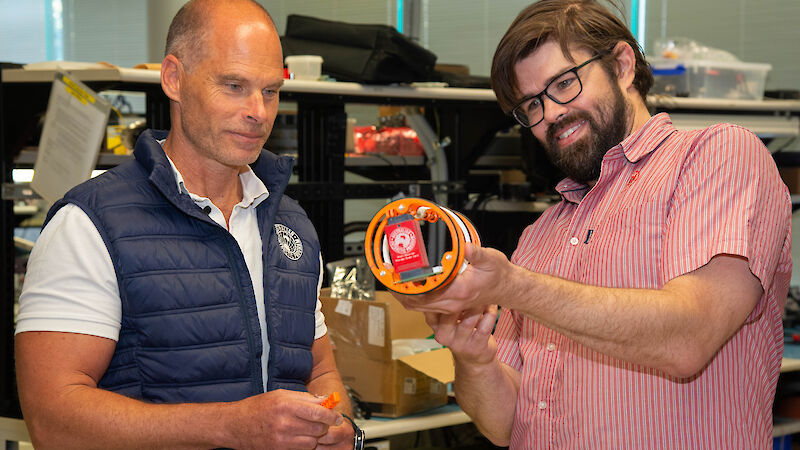An eight week Antarctic voyage to study krill in the Southern Ocean is a bit like a Hollywood movie.
There's all the glitz and glamour of novel high-tech instruments being deployed into the deep sea for the first time, with the attendant excitement of spotting a krill swarm, or a big catch for scientific research.
But it's what goes on behind the scenes, before the voyage even departs, that ensures the end result will be a block-buster.

Enter the Australian Antarctic Division's Technology and Innovation (T&I) team.
These in-house innovators have a range of skills, including engineering, deck handling, instrument design and fabrication, IT, laboratory management, and risk and safety assessment. Together, they have worked tirelessly to get the latest voyage, studying krill off East Antarctica, out to sea.
Capabilities and Facilities Manager, Rick van den Enden, said the success of the krill research voyage, on CSIRO's RV Investigator, is a great example of how his team help to address big scientific questions in innovative, safe and cost-effective ways.
A 'swarm study system', for example, which floats with a krill swarm and uses a series of stereoscopic cameras to capture a 3D view of krill, 30 to 60 metres below the surface, was originally a fairly simple idea, but required a lot of innovation to make it work.
"It was originally conceived as a few underwater cameras on a rectangular metal frame, but as the idea developed it became more complicated," Mr van den Enden said.
"The package had to be stable in the water and float in the right orientation, so we developed some fins to help it do that, and we had to work out how to best deploy and recover it from the ship.
"The scientific questions the instrument could be used to answer also grew, so we ended up adding an acoustic package to the frame."
This small echosounder will allow scientists to correlate information collected from inside the krill swarm, as 'seen' by the system, with what they can detect using the ship's acoustic instruments.
A second novel technology - three deep-sea moorings - contain a range of instruments and cameras that will record ocean properties and film krill for up to a year. This will allow scientists to gather important data beneath the sea ice in winter - which up to now has been completely inaccessible.
While the design of the moorings was outsourced due to time constraints, the T&I team assisted with the tender process, and ensured the design would be compatible with a retrieval from the moon pool of the new Australian Antarctic icebreaker, RSV Nuyina, when it comes into service later this year.
The team also re-designed some of the instruments used in the mooring, to fit.
"Our electronics engineer spent about two months re-working our whale mooring electronics so they would fit in the new mooring to record underwater sounds," Mr van den Enden said.
"It was a great test of our 3D printing capability.
"Our gear officers then worked with the researchers during a trial of the moorings, to work through deployment and recovery of the instruments, look at what lifting gear was being used, how it was configured, and developing safe working instructions and risk assessments."
A range of 20-foot science containers were also configured for equipment and consumables storage on the voyage. These containers are a key part of the Australian Antarctic Division's push for improved organisation, safety and efficiency on board RSV Nuyina, or other vessels as needed.
"These containers have a flexible design as we want to redeploy them on any ship and any type of voyage, whether that be a resupply or scientific campaign," Mr van den Enden said.
"In previous voyages on Aurora Australis people stored their gear in cage pallets, stacked layers deep and in different areas of the ship, which they would have to rummage through.
"With RSV Nuyina, people will fit out their containers before they are loaded on to the ship, which will make for an efficient port call, the containers have dedicated locations on the ship, and all the manual handling will be done using the array of manual handling equipment on board the vessel.
"Even the shelves in the containers are designed for safe and efficient operations."
During the 220 days the T&I team dedicated to the krill voyage, a range of other equipment was adapted, designed, installed and tested on RV Investigator.
The team, and the scientists they've worked with, can now enjoy seeing their efforts and innovations translate into scientific discoveries.
Learn more about the 'Trends in Euphausiids off Mawson, Predators and Oceanography' voyage, in our 'Krill Matters' feature.






